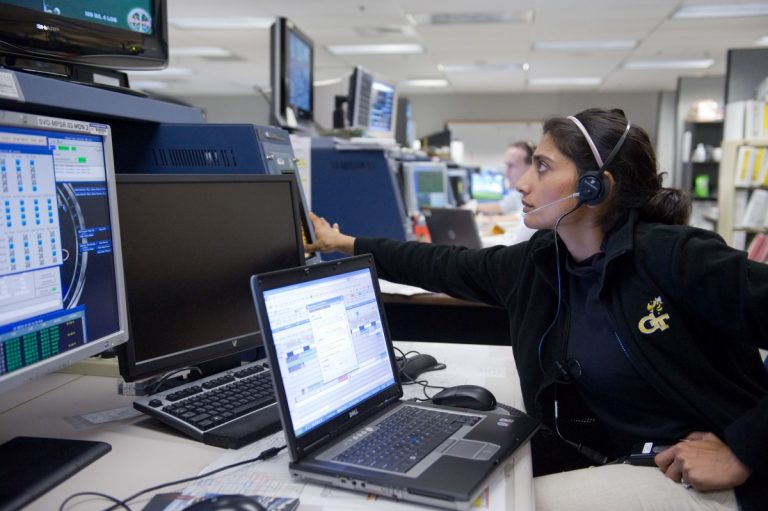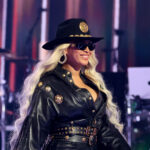
The “About” page for an initiative to encourage more female participation states: ” … we hope these stories will inspire girls everywhere to reach for the stars”.
It’s a pretty standard quote, except this time they mean it quite literally – the body making this statement is none other than the National Aeronautics and Space Administration (NASA), for its Women@NASA initiative.
Introduced by the Obama administration in 2009, the Women@NASA is an initiative under the White House Council on Women and Girls, an executive order which aims to build a coordinated federal response to issues as well as government programmes and policies that relate to women and girls.
Obama created The White House Council on Women and Girls to ensure the needs of women are taken into account in programs & legislation ✅ pic.twitter.com/twuL1sMXBd
— YDAR Women's Caucus (@ydar_women) August 4, 2017
It’s a big aim, and a bigger one even in the Science, Technology, Engineering and Mathematics (STEM) fields, where most of women are victims of some form of sexual harassment and are paid an average of 89 cents for every dollar a man earns in top positions.
It’s only fitting then that the person who heads this initiative at NASA, Dr Mamta Patel Nagaraja, is one who is not only academically qualified for the position, but whose life story does a good deal to dispel the “stereotype” that “women just can’t do science”.
Mamta holds three degrees: a Bachelor of Science in Aerospace Engineering, a Master of Science in Electrical Engineering and a Doctor of Philosophy in Bioengineering – a feat considering in the United States, women earn only about 35 percent of the undergraduate degrees in STEM, according to data by the National Center of Education Statistics.
And while growing up, she watched lunar eclipses and made styrofoam models of the Solar System, all while going into forest expeditions to identify flora and fauna and using jackhammers to repair air-conditioners.

Mamta, as their technical communications instructor, with the ULF-6 Space Shuttle crew headed to the International Space Station. Source: Dr Mamta Patel Nagaraja.
In an article for HuffPost, Dr Mamta thanked her teachers and elder sister for instilling and encouraging not only her keenness for science and maths, but also other non-scientific skills, such as arts and communication – a far cry from the usual lack of encouragement schoolgirls face when going into advanced classes for subjects such as physics and maths.
At NASA, she has trained astronauts who flew aboard the US Space Shuttle and fly aboard the International Space Station (ISS) as well as worked as a flight controller in the Mission Control Center, which manages space flights from their launch until the end of the mission. She was also one of the 120 who received interview slots for the 2013 astronaut candidate selection, beating 6,000 other applicants.
When asked to describe her work day, Mamta told Study International News: “There is no typical day! … For me, when I was training astronauts, a day could include a simulation where we mimic a setup for the astronauts in space. Then as the instructors, we have mapped out a series of failures that will require the astronauts to fix equipment, communicate with Earth (Mission Control) and potentially save a crew member.”
Now, for Women@NASA, she juggles everything from interviews with major news outlets to guiding her team to be as successful as possible in their individual jobs as well as making sure NASA’s main website and social media accounts are bringing the right message out to the public.

Mamta at a DC Public School talking about spacewalks to kids. Source: Dr Mamta Patel Nagaraja.
It’s a lot to do with managing and communications, not exactly what engineering degrees are known for producing, but Mamta disagrees with this, saying:
“An engineering foundation really provides you with critical thinking skills and problem-solving capabilities.”
“These skills can be applied in almost all jobs – even if you aren’t engineering anymore.”
Dr Mamta hopes Women@NASA, which she calls “a noble cause”, will succeed given the heavy task of training and developing the next generation of engineers and scientists. For the fairer sex, their inclusion in STEM is all the most pressing as the future will be all about innovation and technology.
For those who feel a career in NASA will only be limited to science and engineering, Mamta’s advice is to quell those fears, saying the space agency needs “lawyers, communications specialists, scientists, engineers, software experts, graphics artists, and so much more”.
For example, Mamta herself works with a graphic artist to communicate NASA’s work visually and one day even envisions she would write a song about science and hear it on the radio.
“Many things we do can and will help people directly – most young girls I know really want to make this world a better place.”
“And you can do that in STEM.”
Liked this? Then you’ll love these…
Malaysian educators head to space academy to boost STEM teaching







